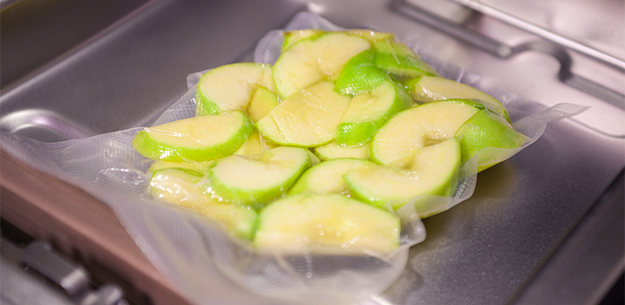.png.transform/rendition-xs/image_image%20(1).png)
Vacuum Cooking
Cooking food inevitably involves some loss of flavor and major loss of weight caused by the phenomenon of oxidation, which happens in any process in which oxygen plays a part. The French chef George Pralus attempted to resolve this problem in the mid-seventies by looking at the applications of vacuum packing already commonplace in the food industry, although at that time they were used exclusively for preserving food and everyday consumer items
Pralus managed to cook a previously vacuum packed foie gras terrine preserving all its flavor despite the plastic packaging, reducing weight loss during cooking from nearly 50% to only 5%. This opened up a new field in gastronomic research, leading to the development of the vacuum cooking technique.
The Catalan chefs Joan Roca and Narcís Caner have played a leading role in this new trend with their Roner, a piece of cooking equipment that controls the low temperature vacuum cooking method used in professional kitchens.
What is involved?
There is a difference between vacuum packed cooked food, in which products are cooked using traditional methods before being packaged under vacuum, and vacuum cooking, which is the technique of cooking raw food that has been previously vacuum packed.
The method consists of applying heat (either by steaming or in a water bath, known as bain marie, but never in the oven) to a product that has first been packed and hermetically sealed by sucking out all the air. The food is cooked at a lower temperature, under 100ºC / 212ºF, and for longer than traditional cooking methods.
In some cases, either for culinary or presentation reasons, the food may be seared on a hot griddle before packaging to get a golden color. The cooked product must be cooled rapidly, using a steamer, a convection oven or a microwave.
What is the Roner?
Basically it is a water bath (bain marie) controlled by a thermostat and with a system of circulation that ensures the cooking water is kept at an even temperature. It enables a constant temperature of between 5º and 100º C / 41º and 212ºF to be reached and exactly maintained, which is very important for this technique to be successful, as the temperature must be identical in all parts of the food.
What are the advantages of vacuum cooking?
The vacuum cooking technique can be used for any food product, which is cooked in a hermetically sealed environment and in its own juices, which preserves its natural flavor. It also greatly reduces loss of weight and volume, helps to keep aromas fresh and lengthens the shelf life of the food, which can be kept for between 6 and 21 days. This has many logistical advantages (storage, simplified service, planning) as food can be prepared several days before serving.
Paco Roncero is head chef of La Terraza del Casino restaurant (Madrid)

